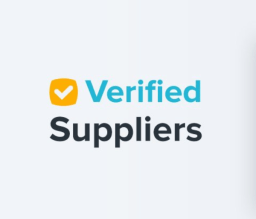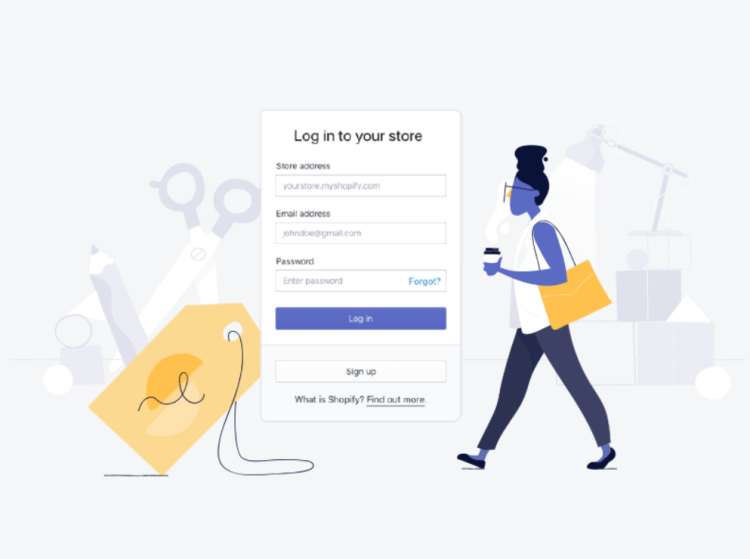Latest news about Bitcoin and all cryptocurrencies. Your daily crypto news habit.

Thanks to the rise of dropshipping and e-commerce it’s never been easier to run your own side business online. Yet it can still be a daunting process, and often knowing exactly how to start an e-commerce business — one that actually makes money — can be remarkably difficult. If you’re thinking of starting an e-commerce store, maybe you know the feeling too. But don’t worry, because in my hands is a clipboard that changes everything.
Today I am going to share our How to Start an E-commerce Store Checklist. We’ll go over everything you need to know to set up your online business.
We’ll cover:
- E-commerce marketing
- Product sourcing
- Tips and tricks.
By the end of this article, you’ll see that creating an e-commerce business is much more doable than you might have thought.
Let’s get started an e-commerce business.
1. Finding The Right Platform
By platform, I mean a virtual space for your e-commerce business. Just like a brick and mortar store, you’re going to need a virtual location to showcase your products. You can use a basic e-commerce store template made by Shopify. Their software is intuitive and used by millions of e-commerce entrepreneurs all around the world.
If you want an in-depth tutorial guiding you through each and every step of building an online store with Shopify check this article.
2. Finding Products
If you’re a complete newbie to the world of e-commerce, you might be wondering what exactly you should sell. There are literally millions of products to choose from, so finding the right product for you may seem a little daunting.
In fact, not knowing what to sell is one of the most common reasons why people don’t follow through with their e-commerce ambitions.
Here are two things to think about when it comes to picking a product to sell:
- Is the product trending?
- Is the product easy to find elsewhere or available on popular e-commerce sites like Amazon?
You can check if a product is trending or forecasted to trend by using Google trends. It tracks how often a particular search term is entered relative to the total search volume across various regions of the world, and in various languages.
This gives you a sense of how often people are looking for a particular product. If more and more people are searching for a product every month, I can safely say that product is trending.
If a product is easy to find elsewhere, it might be a generic product. Generic products like jewellery or books are already widely available. New dropshippers trying to sell products like these will struggle to compete against bigger e-commerce stores.
The better strategy is to find a niche product or set of products that appeal to a particular audience.
How do you do that?
Start by making a list of product ideas you want to sell in your e-commerce store. Ask yourself what your friends, family, and other like-minded people might be interested in buying. Then go online and see how easy it is to find the products on your list.
What can you find on sites like Instagram, Pinterest, or Etsy? If there are limited options on those sites, you might be on to a great product idea.
3. Product Sourcing
Now that you’ve picked your product, it’s time for you to find a supplier. This is where the dropshipping business model is worth mentioning. Among entrepreneurs, dropshipping is growing more popular every year.
Why?
It requires less investment up front because there’s no requirement that merchants stock their own inventory.
Here’s how dropshipping works:
- Find products in an e-commerce marketplace like Oberlo.
- Import those products into your store.
- You place the order.
- The supplier ships the item directly to your customer.
With dropshipping, you never have to handle the merchandise. You can also swap out products in your store in minutes, giving you the flexibility to stay on top of current trends.
Also, apps like Oberlo automate a lot of this process for you. This gives you more time to focus on things that will help you to scale your business — like coming up with a great e-commerce marketing strategy.
If you’re looking for products to sell on Oberlo, make sure you also look for the blue Oberlo Verified badge. These are top dropshipping suppliers. Suppliers with the Verified badge have successfully completed a minimum of 1,000 orders with Oberlo. They deliver on time, meet expectations, and they provide fast support Oberlo vets with all of these suppliers to ensure they have their paperwork in order, maintain excellent warehouse conditions, and consistently get positive merchant feedback. Then and only then do they become Verified suppliers with Oberlo.
4. E-commerce marketing
Alright, you’ve set up your store and are ready to take orders. You have a great product, and you’re working with a great supplier. It’s time to find some customers for your store with a sensible e-commerce marketing strategy.
We can’t emphasize enough how vital it is to focus your energy and time on marketing. Before you do anything else with your store, ensure that you can generate traffic and reach potential customers.
The key to e-commerce marketing is to find the right channel for your products.
After that, fine tune your strategy so that the cost of finding a customer is less than what you earn from the sale. This is quite a meaty subject, with lots to get your teeth into.
5. Customer Service
Research suggests that 45% of US customers will abandon an online transaction if their questions or concerns are not addressed quickly. Having customer service is critical to your online store’s long term success.
Luckily, there are several ways to offer great customer service:
- Create self-service content and a detailed FAQ page.
- Offer live chat support if you have enough time.
- Ask from your first customers to take product reviews.
6. Conversion Optimization
On average, 69% of your website visitors will leave your site without completing a purchase.
How much more profit would you make if that 69% completed a purchase?
It’s certainly worth investing some time to find a way of capturing your abandoned carts at the checkout. I’ve seen several tactics work well for dropshippers.
For example, you can create limited-time offers. Or you can launch a cart abandonment emails campaign. You can even set up a retargeting ads campaign.
Get creative. This is an aspect of entrepreneurship that requires constant experimentation. If something comes to mind that you think will make customers more likely to buy your products, try it out. Measure the results. And try again.
7. Store Optimization
Here’s something worth remembering: 44% of online shoppers will tell their friends about a bad experience online. This is why you should always keep the performance of your website in mind, and seek to optimize it wherever possible.
- Improve your website speed
- Create an intuitive navigation bar
- Focus on creating a great product page
- Display related items
- Optimize your store search
- Check how your store looks on mobile and tablet devices
This is when those little store tweaks can add up to a big impact on your bottom line.
8. Inventory
Best selling products come and go. After all, remember the fidget spinner? That’s why your inventory is vital.
As an entrepreneur, you should always be curious about new product ideas that could entice visitors to your store. At the same time, you should always be revisiting your stock of steady-selling product.
If something isn’t selling, replace it with an item that’s flying off the virtual shelf. Get into the habit of testing products every day. Research new products using Google trends, and add promising new products to your existing ones to help drive sales.
1. Learn By Doing
It’s all part of the fun of being an entrepreneur. Making mistakes is fine. In fact, that’s often how we learn best. And anyway, what are you going to do if you mess up? Fire yourself? Probably not. Be curious, be bold, and build your store sooner rather than later.
You can see how the creme de la creme of Shopify store owners set up their stores in our Best Shopify stores on this article.
What do you think of our e-commerce business checklist — did I miss anything? Do you agree with how much emphasis I put on marketing? Are there any apps that you would recommend to first-time store owners? Tell me in the comments! I personally read the comments and will get back to you. For more tips check 20 Best E-commerce Tips And Tricks.
How to Start an E-Commerce Business was originally published in Hacker Noon on Medium, where people are continuing the conversation by highlighting and responding to this story.
Disclaimer
The views and opinions expressed in this article are solely those of the authors and do not reflect the views of Bitcoin Insider. Every investment and trading move involves risk - this is especially true for cryptocurrencies given their volatility. We strongly advise our readers to conduct their own research when making a decision.






